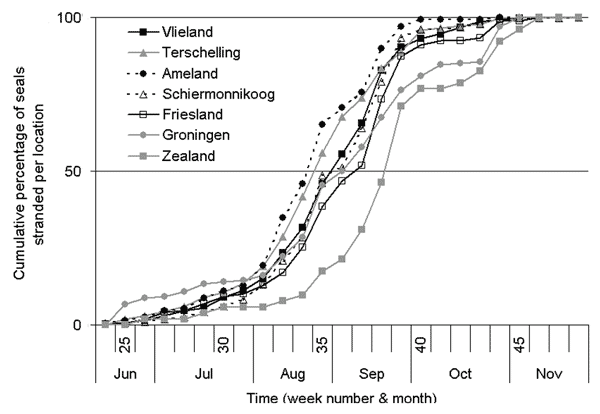Volume 11, Number 12—December 2005
Dispatch
Phocine Distemper Outbreak, the Netherlands, 2002
Figure A3

Figure A3. Effect of location on temporal distribution of stranded harbor seals. Strandings per location are expressed as a relative cumulative frequency curve. The 50% value of each curve corresponds with the median stranding date for a particular location. Note that strandings at Zealand occur ≈1 month later than at Wadden Sea locations.
Page created: February 02, 2012
Page updated: February 02, 2012
Page reviewed: February 02, 2012
The conclusions, findings, and opinions expressed by authors contributing to this journal do not necessarily reflect the official position of the U.S. Department of Health and Human Services, the Public Health Service, the Centers for Disease Control and Prevention, or the authors' affiliated institutions. Use of trade names is for identification only and does not imply endorsement by any of the groups named above.